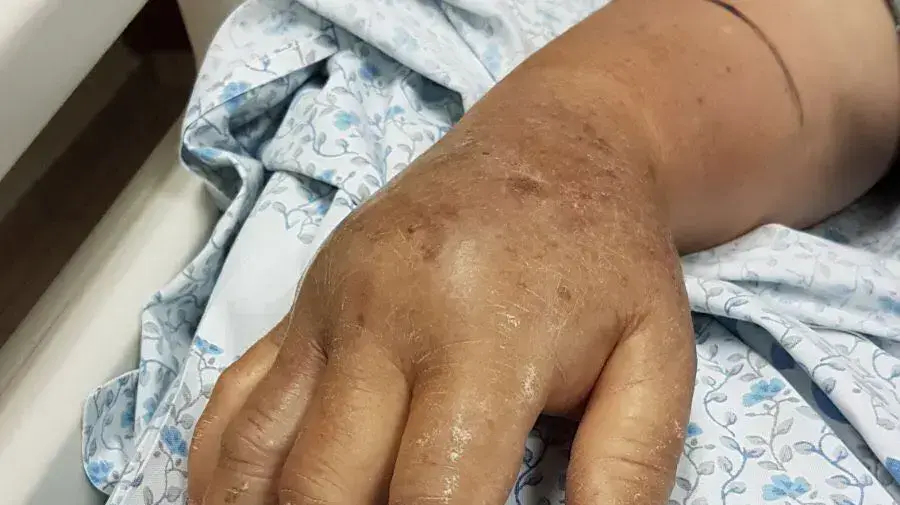Biting season has begun/Official site, Ziv Hospital
Last weekend, two children were admitted to the Ziv Medical Center after being bitten by a poisonous common viper (Ertez Israeli viper). The two children, a 10-year-old boy from Mizfat and a nine-year-old girl from Yasud Ha'Maale, were admitted about 24 hours apart, after being bitten by a snake on the palm. They were examined at the Ziv children's emergency room, and treated by the staff with anti-venom (anti-serum).
Dr. Diana Faor Kasem, director of the children's emergency room at Ziv, notes that after the beginning of spring and the increase in temperatures, the snakes woke up from their winter sleep and they started to move around our environment, and as soon as the snake Feels some kind of threat then it bites, and the bite can be venomous. Therefore, extra caution should be taken especially in this season, if someone has been bitten by a snake, they should be calmed down as much as possible, try to fix the bitten limb close to the body to prevent the venom from spreading in the body, and go to the nearest emergency room as soon as possible, preferably in an ambulance. Do not linger to photograph the snake so as not to risk another bite or waste valuable time.
Here is everything you need to know about snake bites and their immediate treatment:
What do you do in case of a snake bite?
The first and most important action is to call for help - call an ambulance immediately. Most of us are not experts in identifying and catching snakes, so it is best to treat any snake bite as an emergency, even if you think you know whether the snake was venomous or not. Many snakes look similar, and waiting for symptoms to appear can be dangerous.
Are there things that are recommended to be done as first aid until the ambulance arrives?
It is advisable to remain as calm as possible, not to run and not to panic, thus trying to slow down the rate of spread of the poison in the body. This is especially important in the case of a poisonous snake. The reason for this is that the venom often enters the body through the lymphatic system, and not directly through the bloodstream as many believe. Unlike blood that is continuously pumped through the body, the lymph moves when the limbs are moved, so it is recommended to stay calm and move as little as possible. Long, deep breaths may help the body to relax.
In addition, it is recommended to identify the snake when reporting or arriving for a medical examination, so if it is possible to photograph it, that is excellent.
More in Walla!
Jonathan went on a trip with his parents, and it almost ended in a fatal disaster
To the full article
It's a good idea to take a picture of the snake to make handling easier. Viper Snake/Walla System!, official site
Should I put something in the bite area?
Most snake bites are on the lower limbs and some on the hands. In order to help slow down the absorption of the venom, it is recommended, assuming that equipment is available, to wrap the bitten area with an elastic bandage (below and above the bitten area). If you do not have a useful bandage available, you can use any other elastic material such as a torn shirt, socks or other fabric. Of course, in the case of an injury to the head, neck or upper body, do not put a pressure bandage at all.
What should not be done?
It is advisable to avoid stubborn attempts to catch, injure or kill the snake. All hospitals have treatment using antibodies to the various types of venom, and tests that can help determine the severity of the bite and adjust the most appropriate treatment.
In addition, there are many old methods of treating snakebites that can cause more harm than good. Among the non-recommended methods - washing the bitten area in the field, sucking the bitten area to "suck out the venom", cutting the bitten area or tying a tourniquet on the limb, which can cause irreversible damage.
More on the same topic:
snakes
Snake bite

